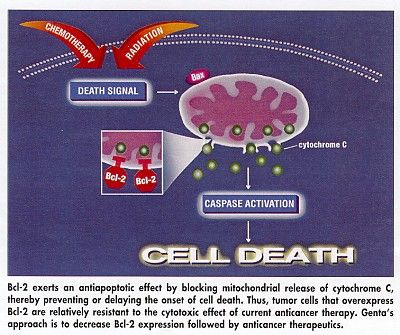Augmerosen, Antisense Drug, in Phase III Testing in Melanoma
NEW YORK-An antisense drug that targets a protein that interferes with the actions of chemotherapeutic agents is entering phase III trials, said Raymond P. Warrell, Jr., MD, president and chief executive officer, Genta Inc., Berkeley Heights, New Jersey.
NEW YORKAn antisense drug that targets a protein that interferes with the actions of chemotherapeutic agents is entering phase III trials, said Raymond P. Warrell, Jr., MD, president and chief executive officer, Genta Inc., Berkeley Heights, New Jersey.
Speaking at the Chemotherapy Foundation Symposium XVIII, he reported that augmerosen (Genasense) is being tested in a phase III study in melanoma patients.
The trial will compare the effectiveness of dacarbazine with and without augmerosen. Randomized trials are also beginning, he noted, in chronic lymphocytic leukemia and myeloma.
Understanding Antisense
Antisense drugs are small, chemically modified stretches of single-stranded DNA bases. These short nucleotide chains, or oligonucleotides, are designed to bind (hybridize) to a specific region of the target messenger RNA (mRNA). This ultimately causes enzymatic degradation of the mRNA, thus preventing production of the targeted protein.
The safety of augmerosen was established in phase I/II studies that enrolled more than 200 patients, Dr. Warrell said. The studies included patients with breast, prostate, and bladder cancers, malignant lymphoma, and acute myeloid leukemia, as well as the diseases targeted in the phase III trials.
"The most common side effect is low-grade fever," Dr. Warrell said. This occurred in 20% of patients in the phase I/II trials but resolved within 2 days. Fatigue was noted in 10% of patients.
These adverse reactions, Dr. Warrell said, "do not overlap importantly with side effects of current agents." This is significant, he added, since augmerosen will be used in conjunction with standard anticancer chemotherapy.
Augmerosen is aimed at the Bcl-2 protein, an important inhibitor of apoptotic cell death. "Bcl-2 is widely overexpressed in many different types of cancer cells," Dr. Warrell said.
Overexpression rises with each cycle of cancer therapy, he added, because Bcl-2 is a highly inducible protein and a selection phenomenon is occurring.
"In the first round of chemotherapy, the cells that are killed are primarily Bcl-2 nonexpressing or low-expressing cells," Dr. Warrell said. The overexpression of Bcl-2, he added, is a key element in resistance to radiation therapy and chemotherapy.
Augmerosen uses antisense technology, he explained, to bind to Bcl-2 messenger RNA. The resultant downreg-ulation of Bcl-2 permits the apoptotic stimulus created by cytotoxic agents to get through to activate the cascade toward cancer cell death (see Figure).

Profound down-regulation of Bcl-2 has been documented in the clinical studies to date, Dr. Warrell reported.
A 90% reduction, compared with base-line, was seen in the circulating lymphocytes of patients with prostate cancer in one study, he said.
In a patient with malignant melanoma, a downregulation of about 75% was observed at the end of a 5-day course of augmerosen given prior to standard chemotherapy.
In a phase I/II study of 14 patients with malignant melanoma in which augmerosen was given before dacar-bazine, the median survival was 13 months. Of these patients, 12 had gone through prior courses of therapy. Objective responses were seen in 6 patients, including 1 complete response, 2 partial responses, and 3 minor responses.
A 90-Year-Old Woman
The complete response occurred in a 90-year-old woman who received four cycles of the combination therapy. "All of her lymphadenopathy and subcutaneous disease melted away," Dr. Warrell said. The remaining skin lesion was removed surgically, he said, and histologic review of the tissue showed no evidence of disease.
The dosage of augmerosen established for the phase III melanoma trial is 7 mg/kg given by infusion daily for 5 days prior to initiation of dacarbazine therapy. Treatment cycles are repeated every 3 weeks.